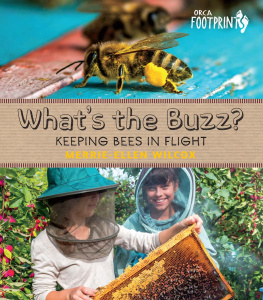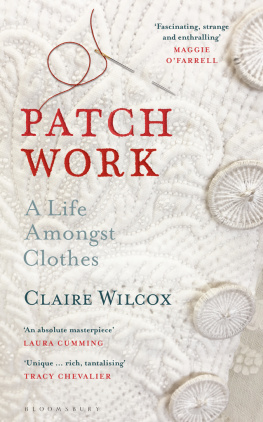Merrie-Ellen Wilcox - Nature Out of Balance
Here you can read online Merrie-Ellen Wilcox - Nature Out of Balance full text of the book (entire story) in english for free. Download pdf and epub, get meaning, cover and reviews about this ebook. year: 2021, publisher: Orca Book Publishers, genre: Romance novel. Description of the work, (preface) as well as reviews are available. Best literature library LitArk.com created for fans of good reading and offers a wide selection of genres:
Romance novel
Science fiction
Adventure
Detective
Science
History
Home and family
Prose
Art
Politics
Computer
Non-fiction
Religion
Business
Children
Humor
Choose a favorite category and find really read worthwhile books. Enjoy immersion in the world of imagination, feel the emotions of the characters or learn something new for yourself, make an fascinating discovery.
- Book:Nature Out of Balance
- Author:
- Publisher:Orca Book Publishers
- Genre:
- Year:2021
- Rating:3 / 5
- Favourites:Add to favourites
- Your mark:
- 60
- 1
- 2
- 3
- 4
- 5
Nature Out of Balance: summary, description and annotation
We offer to read an annotation, description, summary or preface (depends on what the author of the book "Nature Out of Balance" wrote himself). If you haven't found the necessary information about the book — write in the comments, we will try to find it.
Nature Out of Balance — read online for free the complete book (whole text) full work
Below is the text of the book, divided by pages. System saving the place of the last page read, allows you to conveniently read the book "Nature Out of Balance" online for free, without having to search again every time where you left off. Put a bookmark, and you can go to the page where you finished reading at any time.
Font size:
Interval:
Bookmark:

In April, brightly colored wildflowers fill the Garry oak meadows in Uplands Park.
Chris Junck
T he first thing I see in Uplands Park, a natural area near my home in Victoria, British Columbia, is the Garry oak trees, with their huge trunks, crooked branches, rough gray bark and, in summer, leathery, dark green leaves. In spring, the meadows around the trees are a blue blanket of camas flowers, with patches of hot pink shooting stars, delicate fawn lilies and bright yellow spring gold. In the winter months, the oaks sometimes look ghostly in the mist.
Deeper in the park, though, I see things that dont belong. First the bank of Himalayan blackberry. Then the thickets of English hawthorn and Scotch broom. Worst of all, the English ivy, which smothers everything on the ground and climbs up the oaks, weakening and eventually killing them. All these plants were brought by European settlers. Even the animals I see in the parkgray squirrels, rabbits, cats and sometimes ratscame from elsewhere.
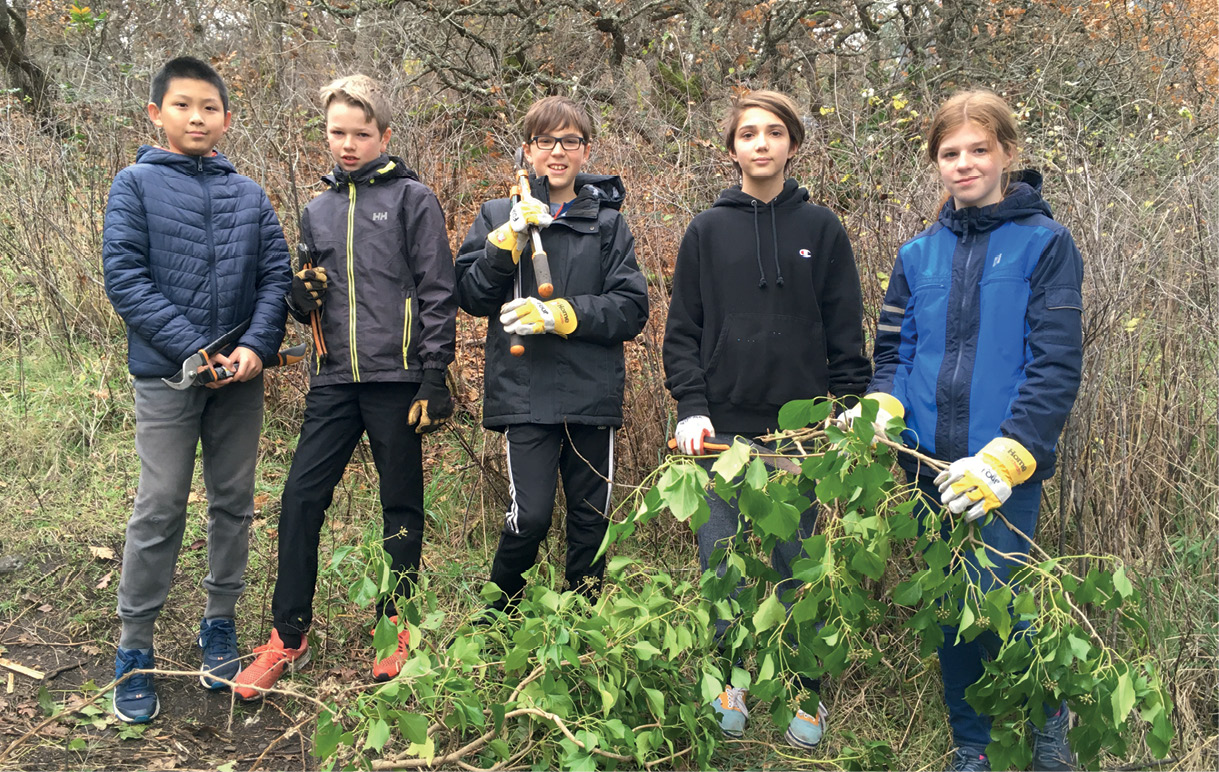
Getting English ivy off Garry oaks is hard work and takes many hands. Merrie-Ellen Wilcox
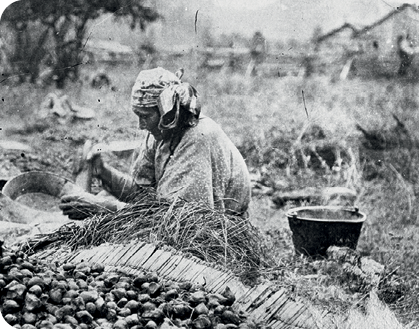
Camas bulbs were an important part of the traditional diet of Indigenous Peoples in the Pacific Northwest. Stephen D. Shawley Collection/Nez Perce National Historic Park
The Europeans had other impacts too. The Lekwungen Peoples once used these meadows to cultivate kwetlal (camas), which grows from a bulb that was an important part of the local diet. They used fire to stop other plants from filling in the meadows, so all available soil could be used for the camas. But the settlers stopped the Lekwungen Peoples from using their traditional practices. Today many of the big oaks are surrounded by dense thickets of snowberries and roses. Its considered too dangerous to burn the meadows, because the fire might spread to all the houses that have been built nearby.
Theres always more to the story than we think! So lets keep walking to find out more about the plants and animals we call invasive species .
Chapter One
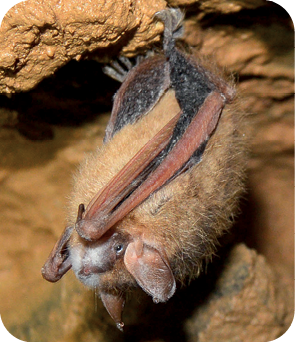
The white fuzz on this little brown bats face means it has white-nose syndrome. Caused by a fungus that likely came to North America from Europe, white-nose syndrome is killing millions of bats. Pete Pattavina/USFWS/CC BY 2.0
D epending on where you live, youve probably heard about invasive species that spell Big Trouble. Theyre in the news. They might be in your school grounds or even your backyard. Experts might have visited your class to tell you about them. And you might even have been part of a group of volunteers helping in the battle against them. Youll see a few of these invasion all-stars throughout the pages of this book.
But first
Any type of organism a living thing, such as a plant, animal, insect, fish, fungus, virus or bacteriacan be an invasive species. It usually doesnt misbehave in its home habitat , where it has evolved as a native species . But once it has been moved to a new area, where it is a non-native species , it begins to spread and become a bully, causing problems for the native species thereand often for humans as well. Thats when we call it a non-native invasive species .
Although these organisms are blamed for everything from extinctions of native species to billions of dollars in damage to crops and to nature, they arent bad in themselves. The real villains are ushumans!since we moved them to the new place, whether by accident or on purpose.

Eco-Fact
A native species is one that occurs naturally in a place, having evolved there over a long period of time without any help from humans.
Species can travel naturally, sometimes thousands of miles, to new regions and even to different continents. In fact, these invasions are an essential part of the history of life on Planet Earth. If the first plants hadnt invaded land from the ancient ocean about 500 million years ago, Earth certainly wouldnt be the amazing place it is now! And if species of all kinds hadnt traveled when the ice sheets melted after the Ice Age, things would look very different from the way they do today. Every species must have been invasive at some point or it wouldnt have continued to exist.

Eco-Fact
Not all invasive species are non-native. Native species can also become invasive, although they usually cause fewer problems.

Eco-Fact
Weed is simply a label we give to plants that grow where we dont want themusually in our gardens and in farmers fields. A weed typically grows or spreads rapidly, and it can be a native species or a non-native species.
Very small organisms, like bacteria, can be carried huge distancesacross oceans and continentsby wind and air currents. Larger organisms expand their ranges (the areas in which they occur naturally) by following the food and other conditions that they need.
But humans have also been moving species aroundby accident since they first left Africa more than 100,000 years ago, and on purpose since they became farmers more than 10,000 years ago. In fact, most of the species that have spread to new places in the last several centuries were moved there by us. Were the all-star vector for non-native species.
This modern liverworts ancestors were likely among the first land plants. They managed to change the earths climate, alter its soils and allow other life to evolve. Ed Reschke/Getty Images


Ballast water emptied from ships moves species around the world every day. Phil Augustavo/Getty Images
We move species accidentally in lots of different ways. For example, early humans probably had seeds from plants in their hair and clothes or on their tools, dropping them as they traveled to new regions.
But the main source of accidental movement of species today is international trade. The globalization of our economies and culture has also caused the globalization of many species. Insects can hitchhike on the fruits and vegetables, grain and wood that we get from and send all over the world. Snails, slugs and bugs can also be hidden on plants traveling from faraway places to our gardens. Reptiles and amphibians can travel to new homes in cargo containers. Scientists estimate that more than 10,000 species a day are being carried in ships ballast water (taken onboard in one place to balance the ship and its load and then dumped in another part of the world when it unloads), including fish, shellfish, algae, fungi, viruses and bacteria. The more stuff we buy and sell, the more non-native species move around.
Font size:
Interval:
Bookmark:
Similar books «Nature Out of Balance»
Look at similar books to Nature Out of Balance. We have selected literature similar in name and meaning in the hope of providing readers with more options to find new, interesting, not yet read works.
Discussion, reviews of the book Nature Out of Balance and just readers' own opinions. Leave your comments, write what you think about the work, its meaning or the main characters. Specify what exactly you liked and what you didn't like, and why you think so.


